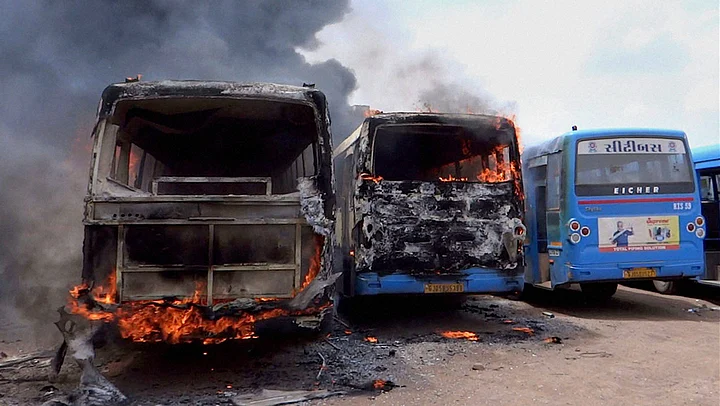Stir’s Sociological Angle
- Hardik Patel, the face of protests for OBC quota, represents unfulfilled aspirations of Patidars struggling with unemployment
- Patidars form 15% of the population left behind, with counterparts belonging to the Kolis and Kshatriyas being granted the OBC status
- Gujarat, despite being a developed state, has been unable to keep pace with creation of job opportunities
- Agitation by Patidars a blow to the Gujarat model of development
It will be three years before Hardik Patel can contest an election. But on Tuesday, August 25, he brought the government of Gujarat, ruled till 2014 by current Prime Minister Narendra Modi, to its knees.
The Patidar Anamat Andolan Samiti (PAAS), which he leads, organised a massive rally in the state capital, bringing Ahmedabad to its knees. Estimates vary, but between 5, 00,000 to 8, 00,000 people were cheering him on, when he said, “We uprooted the Congress, now 2017 (the date for Gujarat’s next assembly polls) is coming. The lotus (the BJP’s party symbol) will not bloom.”
Strong words, but you have to take him seriously: the PAAS is a formidable organisation, steadily growing in strength and able to tap into the aspirations and frustrations of a growing young population in the state. Much of these aspirations are thwarted, as kids eager to leave the farm or agricultural cooperatives that thrive in this state, run up against a brick wall of unemployment in formal jobs.
Claiming A Share Of The Pie
So today, they want reservations as Other Backward Classes (OBCs) that could prise the door a little wider for secure government jobs. Gujarat, as Yoginder K Alagh, chancellor of the Central University of Gujarat, points out, is different from most Indian states: it is more urbanised than most, people pour into these urban – or rurban centres by the millions every year – but the government has failed to provide adequate infrastructure to support businesses and create jobs for the hungry, young millions.
Historically, the root of all trouble lies with the British: colonialism came late to Gujarat, but it created a schism between Kolis who the British termed a ‘criminal’ tribe, Kshatriyas and Patidars. Through various complex schemes of landholding and rent payments, the upper Kolis and Kshatriyas formed matrimonial bonds. By the early 1970s, the Bakshi commission had granted them OBC status.
Patidars, another influential community, around 12% in the 1931 census, but now around 15% of the population, took off from their landed interests into other directions, slowly becoming one of Gujarat’s most affluent and peripatetic communities. They ran diamond polishing firms in Surat, traded across the Arabian Sea, set up businesses in east Africa and – most famously – the Patel Motels in the US.
Clash of Aspirations
Yet, as Alagh points out, not all Patels enjoy such privileges: some are ‘nomads’ others, ‘settlers.’ And today, the local, young, aspirational Patels are a restive lot: Hardik Patel, barely 22, can rock a government led by another Patel propelled simply by the frustrations of his flock. If Koli-Kshatriyas can get reservations, why can’t millions of unemployed or underemployed Patidars?
“Gujarat is a far more developed state than many others,” says Alagh. But he laments that the rate of job creation has not kept pace with the migration from farm to town. “It’s a basic lack of infrastructure, because many of these towns have mushroomed in recent years and investments have not kept up.”
Frustration Among Patidars
Alagh was one of the first people to bust the myth, propounded by people like Arvind Panagariya and Ashok Gulati that Gujarat’s agriculture was galloping at 10% or more per year for the last 10 years. He pointed out that most gains had come from the creation of the Sardar Sarovar dam, and were petering out because of a lack of efficient distribution networks for water.
Alagh, presciently predicted a sharp fall in Gujarat’s farm growth, which is now around 4% per year. And that is another factor that drives Patidar frustration and their drive towards alternative employment, which cannot keep pace with their aspirations.
As the PAAS agitation spreads, to Vadodara, Surat and other cities, the so-called Gujarat model starts looking more and more hollowed out and faded. The Patels were Modi’s biggest supporters for nearly 15 years; now that support is dashed on the rocks of unkept promises and unfulfilled ambitions.
(The writer is a Delhi-based senior journalist)
